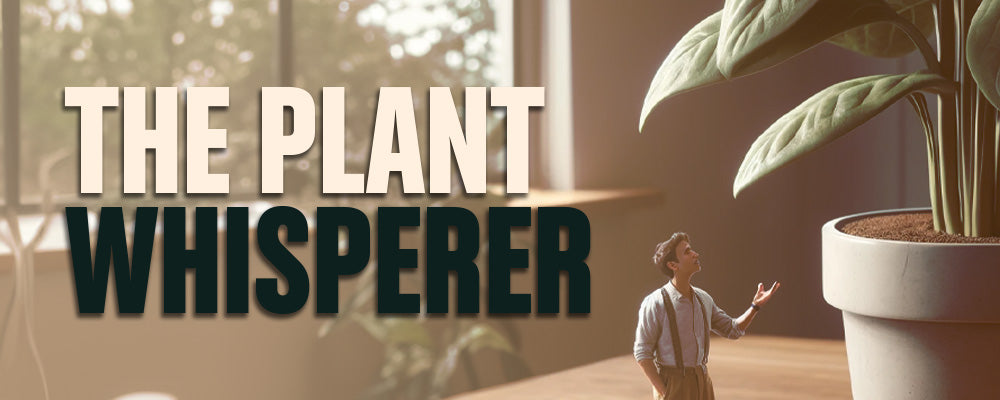
The Plant Whisperer: What Are Your Plants Trying To Tell You?
Like humans, no two plants are ever the same.
Even cuttings, which are genetic clones end up developing different personalities. They can be lively or lazy, fussy or greedy, delicate or hardy.
The signs of suffering, however, are pretty universal! If your plants are looking a little shabby, they could be trying to tell you something.
Here's how to read the signs.
Scan Your Plants
Stand back and scan your plant. What do you see? Does the plant seem relaxed and happy or tense and curled up?
You should see
Healthy plants are an even shade of green. They're vibrant and shiny, but not too dark!
You should see good size leaves that fall nice and flat, facing the light.
If something's not right
If you spot leaves that are drooping down or pointing up, you may have a problem.
The first thing to do is move your lights up a few inches - this'll take the pressure off plants while you get your Sherlock on.
Growth
Growth patterns are mostly determined by plant genetics. Some are naturally short and bushy, others are tall and sparsely branched.
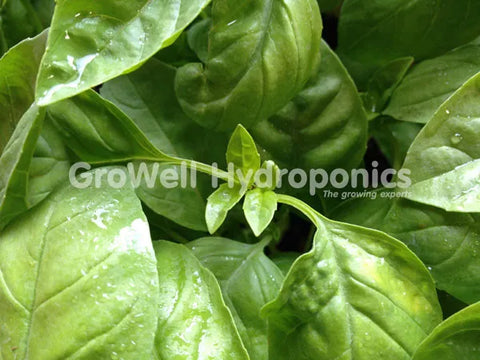
New Shoots
Apart from genetics, the main reason for differences between plants are:
- Too little light
- Too much light
- Heat extremes
Ask yourself, are your lights really close to plants or not close enough?
Look for signs like upward leaf curl, which indicates the leaf is trying to retain moisture. In this case, the light will probably be too close.
Interestingly, plants can cope better with intense light in a hydro system, where there's lots of water and oxygen available. Adding silicon to your feed also helps to increase your plants resistance to stress.
As long as your plant's fairly healthy and growing every day, all is well! The bigger the plant, the better it will cope with its environment.
Rope ratchets are ideal for adjusting the height of your plants.
Colour
Colour loss across the top, middle or bottom sections of the plant is often caused by underfeeding or nutrient deficiencies.
NPK deficiency
Potassium: look for yellowing larger leaves (from the tips and margins, towards the main leaf vein).
Nitrogen: look for yellowing of larger leaf tips, that spreads evenly back towards the leaf stem.
Phosphorus: look for a dark purple tinge on large, green leaves and a purpling stem.
N, P & K are mobile, so new shoots will be the last parts of the plant affected by a deficiency. Act quickly and you can fix the problem before it gets too serious.
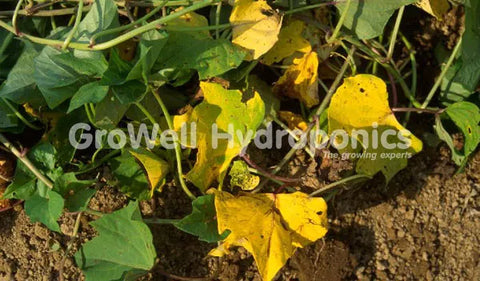
Nitrogen Deficiency
Micro deficiency
All essential micro elements (like iron & calcium) are less mobile.
Once sited, it's tough for plants to move them around to critically low areas. This means, these deficiencies first show on new shoots and leaves, and less so on older or bigger leaves.
Magnesium is the exception. Deficiencies show on the middle to older leaves, which start turning yellow while their veins stay green (interveinal chlorosis). As the deficiency gets worse, brown rusty spots / burnt patches appear on leaves. Fear not! this problem's easy enough to fix. All you need is a foliar spray of CalMag.
Iron deficiencies will manifest as interveinal colour loss.
Calcium deficiencies will show as necrosis on young leaves. Growing tips will look brown and crispy and you'll get brown, necrotic spots on the middle to older leaves.
Other causes
Other reasons for colour loss include:
- Cold nights
- Bleaching from the light being too close
- Wind burn
- Overly warm nutrient solutions (limiting oxygen at the roots)
- Over transpiration on leaves
If caused by lack of oxygen at roots, plants will also look droopy and grow very slowly.
If caused by over transpiration, leaves will first lose some sheen, then will start yellowing. A couple of weeks after the damage was done, you'll start to see rust spots.These leaves slowly start to die as the stomata fail to function properly.
Leaf Damage
Take a look at your leaves. How do they look?
Always look at new shoots - they're the best indicator of what's happening right now.
If new shoots are growing well and look healthy, this might be a sign that a previous problems has been overcome.

Drooping leaves
Leaf drooping
18 hours of intense light is very demanding for young plants! You're bound to get some leaf droop, especially in:
- pots where oxygen uptake is limited
- a hydro system when feed's become too warm
As plants get bigger, they'll naturally get better at dealing with intense lighting. To help keep them healthy in the meantime, manage your nutrient:
- Keep the temperature to 18oC - 21oC
- Make sure your pH & CF is right (don't overdo pH adjustments)
- Keep your oxygen content high in hydro
A combined EC/pH meter makes measuring your pH and CF easy.
Leaf loss
As fast-growing, light-loving plants get bigger, they shed large, old leaves. Don't panic - this is normal!
They do this so that they can direct more nutrients to leaves nearer the light, where more energy is produced.
Leaf size
- Bigger, wider leaves form in humid environments, under sodium lights.
- Slightly smaller, narrower leaves form in dry environments or under fluorescent lights.
If leaves look a bit too small, it might mean you've been overfeeding
Leaf colour
A shiny vibrant green is what you’re looking for here. If plants are too dark and dull, and curl or hook downwards at the tips, it's a sign of overfeeding.
Colour loss on large, older leaves is normal. As your plant gets bigger, they get less light and lose colour as a result. Your plant then replaces these leaves with new growth nearer the light source.

Curling leaves
Leaf shape
Leaf shape is mostly down to genetics.
However
If blades are narrow, lack colour, & are under sized or misshapen, there could be an N, P or K deficiency. Increase your feed strength slightly.
Twisting and mutating of new leaves is either unstable genetics, lack of calcium, silicon or (more commonly) excess chlorine. De-chlorinate your tap water in a bucket for at least 12 hours before use.
Yellowing Leaf Tips
This is common and hard to avoid. As long as there are no other symptoms, it is probably a very mild form of wind burn.
Leaf tip curl down
When leaves curl or 'cup' at the tips and the margins, the plant is trying to retain moisture. Any form of downwards curling usually indicates overwatering or overfeeding.
Using a flush product removes excess nutrients from your plants and growing media to help fix overfeeding issues.
Leaf tip curl up
Upwards curling is caused by your environment. - probably:
- Wind burn
- Lights being too close
- Not enough air exchange
The problem could even be caused by all 3

Leaves Curling Up
Leaf Margin Curl
When leaf margins curl down, there's probably a problem with yout rootzone.
Usually it's overfeeding, but can be caused by:
- Nutrient temperatures
- Low oxygen in rootzone
- Any of the problems that cause leaf tips to curl up
Cloth pots are breathable, increasing oxygenation in your rootzone.
Over-Transpiration On Leaves
If there's too much light and heat, plants over-transpire.
Leaves immediately break out in blotchy marks and lose their shine, thickness and smooth, green look.
You'll start to see a loss of colour all over...look between the leaf veins where rusty spots often appear. After a couple of week, you can even spot symptoms a few inches under fresh shoots.
If these symptoms sound familiar, your room was probably too hot and/or your light may have been too close to the plant at some time or other.
Always check new growth and move the light away a few inches if in doubt.
Over-transpiration is commonly mistaken for nutrient deficiency, which is actually quite rare. In truth, about 90% of all leaf damage and rust spotting is down to your environment - not nutrition.
Wind Burn
This happens when you blow too hard on the tops of leaves. This part of the leaf is exposed to a lot of light - if you blow onto them directly, you can dry the leaf!
When this happens, leaves start to curl up at the tip and margins and lose their colour. Then there's dying back from the leaf tip. The dead part of the leaf soon become brittle and crispy.
The problem is, you still need to use air cirulators - just don't aim them at plants.
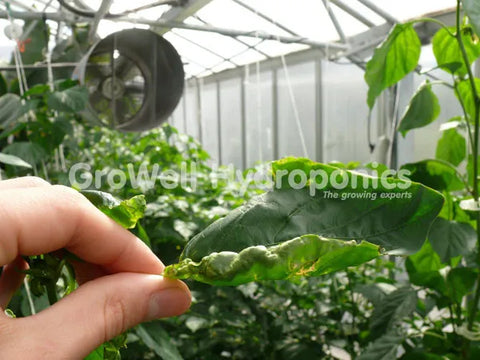
Wind burn
Stems
If you've got a purple stem, you've probably got a Phosphorus deficiency. Check for purpling leaves, too.
Be aware though, it might result from cold conditions or just normal plant genetics.
Roots
You don't need us to tell you what strong, healthy roots look like.
Check roots regularly, and use products like Katana Roots to boost root mass.
To ward off pathogens, use Silver Bullet Roots in a hydro system. In soil or coco, any beneficial that contains Trichoderma is great - Ecothrive Biosys & Charge together are awesome!
Damping Off
Cuttings & seedlings are at risk of damping off when they're in a humid propagator, where the air is still. The bottom of the stem goes soft and watery looking, which can become the beginning of stem rot.
Browning
Normally, you'll get slight browning on your root surfaces. It's hard to avoid, and normally happens towards the end of your cycle.
It often happens if a system that's supposed run 24/7 gets turned off - like bubblers or NFT systems!
Any more than a little bit of browning and you might have root disease.
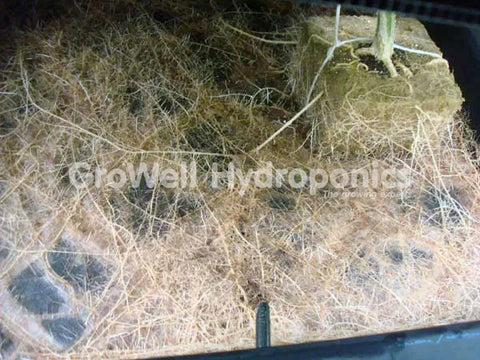
Brown Roots
Pythium & Other Diseases
If your roots come apart when a gentle amount of pressure is applied and they all look sloppy and off colour, you probably have Pythium or some other form of root disease.
Silver Bullet Roots prevents Pythium & stops it getting worse. If Pythium is already well underway, apply Pythoff.

Pythium

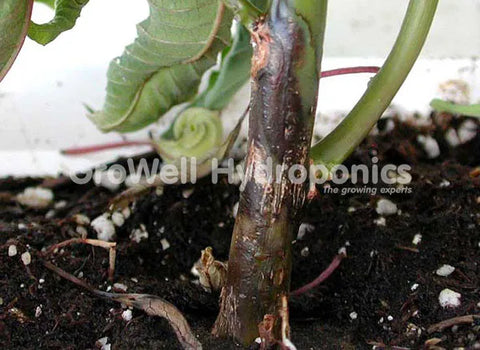
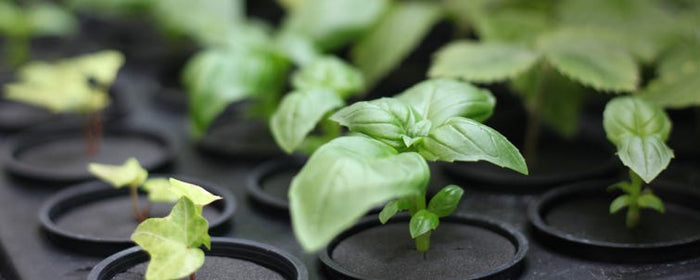
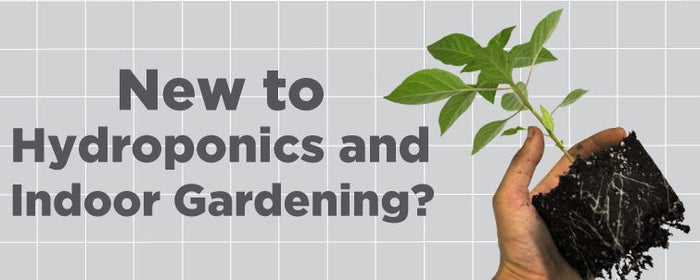
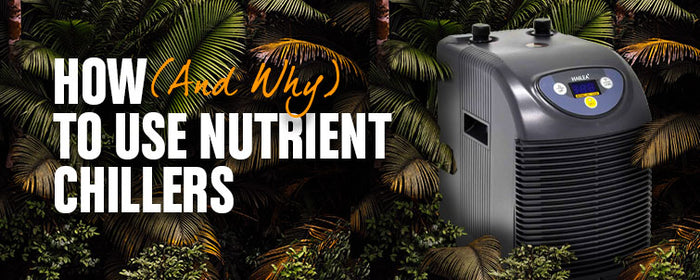

1 comment
Good article. One thing to add. Upwards leaf cupping can also be a sign of herbicides, especially persistent herbicides. These usually come into soil based systems through contaminated soil, compost or worm castings.